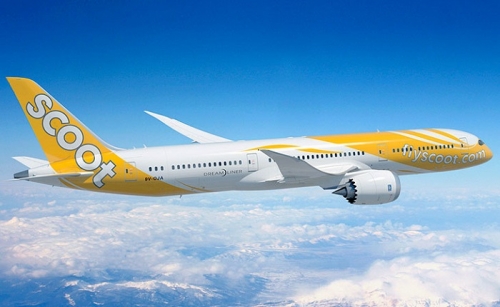Rolls Royce still have no idea why their Trent 1000 engines that power the 787 aircraft are failing!
SCOOT DREAMLINER SUFFERS ENGINE FAILURE ON APPROACH TO PERTH
Australian safety investigators are probing another Boeing 787 engine failure, this time on a Scoot flight coming into the West Australian capital of Perth.
The aircraft, registered 9V-OJE, was descending into Perth Airport on October 11 when the right engine suffered an uncommanded shutdown.
The flight crew continued the approach and the aircraft landed safely about 7:20 pm local time.
“As part of the investigation, the ATSB will interview relevant persons, obtain engineering reports and review operational procedures,’’ an Australian Transport Safety Bureau spokesman said.
“A report will be released at the conclusion of the investigation.
“However, should a safety issue be identified during the course of the investigation, the ATSB will immediately notify those affected and seek safety action to address the issue.”
Scoot confirmed flight TR16 encountered a “technical issue” in its right engine prior to landing in Perth and said passengers were told of the situation over the aircraft’s public address system.
“For customers of the return flight TR17 bound for Singapore, hotel accommodation was provided for them as necessary,” it said. “Where possible, arrangements were also made to fly customers out on partner airline flights to minimize inconvenience.
“Safety is of utmost importance to Scoot and we will spare no effort to ensure the safety and well-being of our customers. Scoot apologizes for the inconvenience caused.”
The airline did not reveal the nature of the engine problem but Scoot’s Dreamliners are powered by the Trent 1000 engine that has caused problems for airlines globally and is set to cost manufacturer Rolls-Royce £1 billion.
Premature corrosion and fatigue cracking of intermediate compressor blades in some versions of the engine have led to flight cancellations and aircraft groundings
Airlines have faced increased inspections, range restrictions and delays in getting engines repaired. Some, including Air New Zealand, have had to lease aircraft to replace out-of-service 787s.
The problems in about 380 engines known as “package C” have caused several engine failures and numerous unscheduled engine removals after inspections have found cracked blades.
READ: Trent troubles to cost Rolls-Royce £1 billion
The European Aviation Safety Agency and Rolls earlier this year reduced the number of cycles between required inspections to address the premature wear.
The US Federal Aviation Administration followed by reducing the maximum flying time affected 787s are allowed to be away from a suitable emergency airport — known as ETOPS — from 330 minutes to 140 minutes.
Rolls-Royce is redesigning the compressor blades but said last month that some blades were wearing out faster than expected and this could “cause additional short-term disruption” affecting 30 to 40 engines.
It has also launched a “precautionary” redesign of the intermediate pressure turbines for older package B Trent 1000 engines and newer TEN engines.
Reported by Airline Ratings on 12 October 2018.
